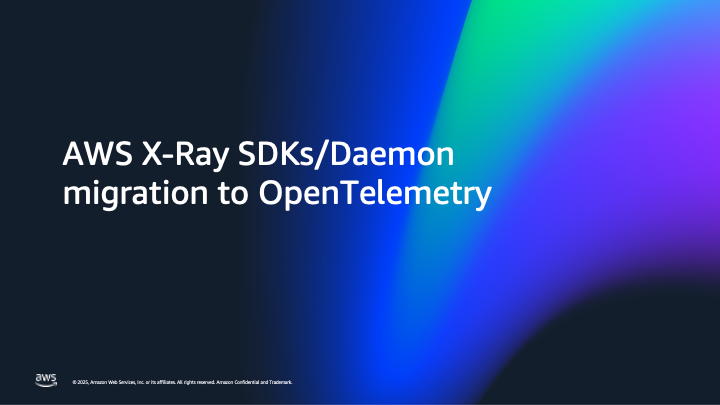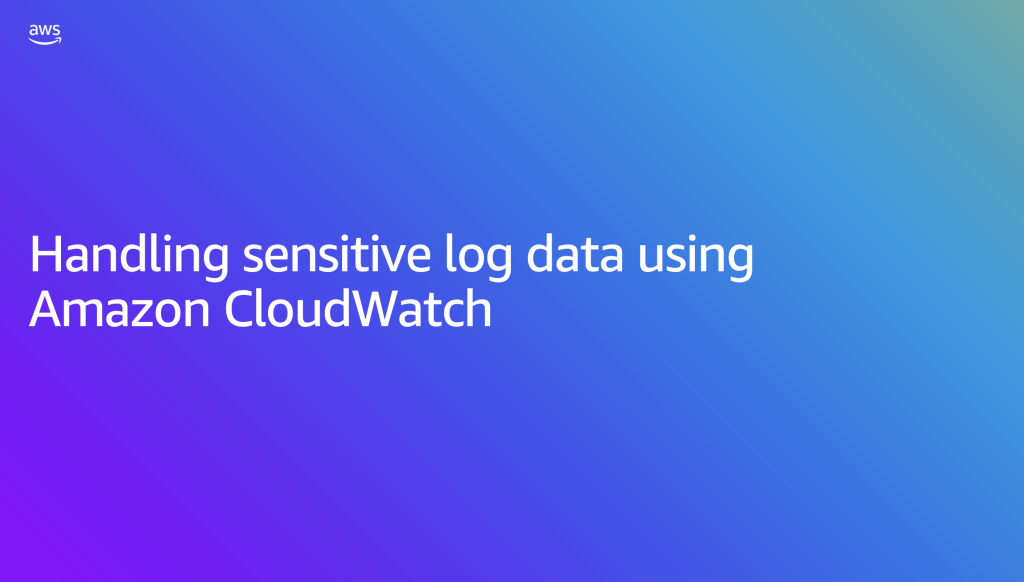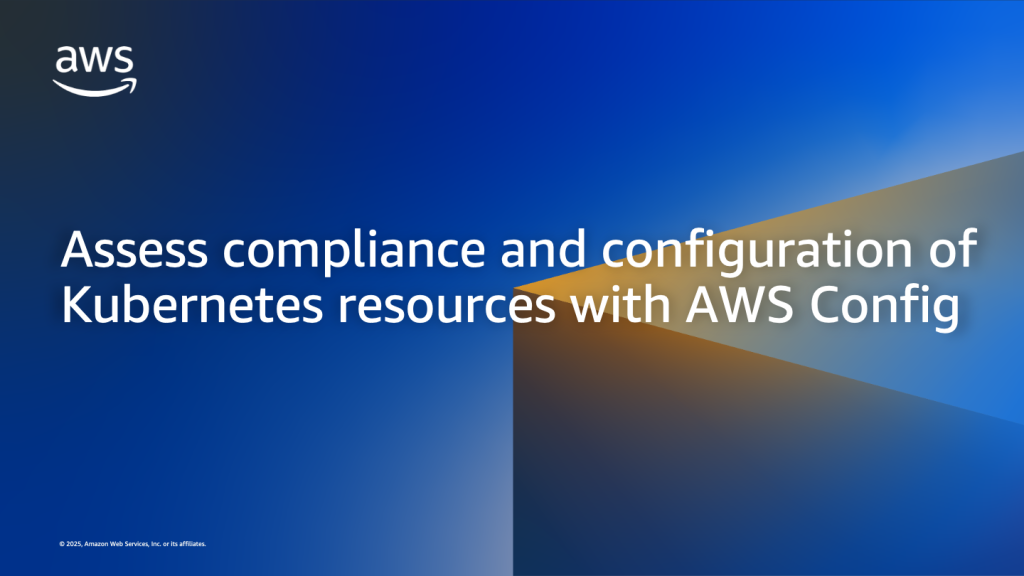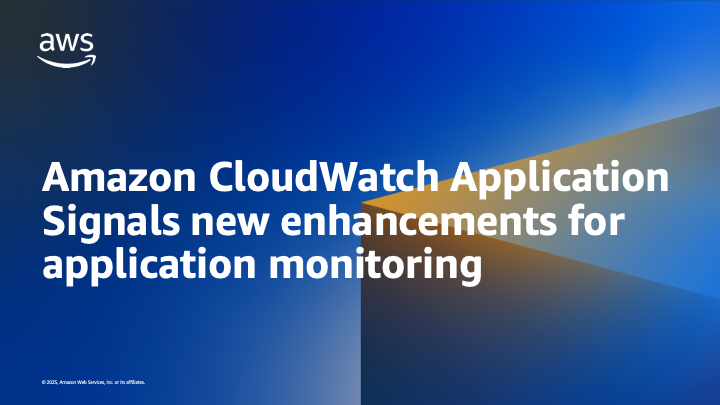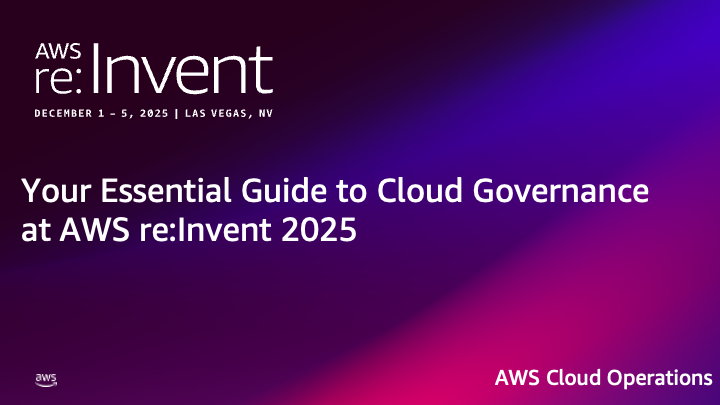AWS Cloud Operations Blog
Category: *Post Types
New AWS Organizations Skill Builder courses to level up your multi-account strategy
Your AWS journey, whether starting with a handful of accounts or scaling to thousands, requires a strong foundation. Think of it like building a skyscraper: the taller you plan to go, the stronger your base needs to be. As your organization grows, so do the challenges of managing multiple AWS accounts. Security policies, access controls, […]
AWS X-Ray SDKs/Daemon migration to OpenTelemetry
AWS X-Ray is transitioning to OpenTelemetry as its primary instrumentation standard for application tracing. OpenTelemetry-based instrumentation solutions are recommended for producing traces from applications and sending them to AWS X-Ray. X-Ray’s existing console experience and functionality continuous to be fully supported and remains unchanged by this transition. OpenTelemetry is the industry-wide open-source standard for tracing […]
Improve the resiliency with AWS Fault Injection service and Amazon ARC Region switch
System impairments occur frequently in distributed cloud environments, making application resilience critical for customers. While traditional disaster recovery testing approaches are often manual and time-consuming, modern chaos engineering practices help validate your application’s ability to handle failures automatically. Amazon Application Recovery Controller (ARC) simplifies application recovery across AWS Regions and availability zones by providing readiness […]
Handling sensitive log data using Amazon CloudWatch
Introduction Efficient logging is crucial to building effective investigative and response workflows. Logs, metrics and traces offer critical value when investigating application issues, security events and debugging failures. Structured wide-event logs can provide a means to investigate application behaviour without requiring access to data stores. This level of verbosity in application logs increases the likelihood […]
AWS Resource Explorer launches immediate resource discovery within a Region
AWS now provides immediate access to resource search capabilities through AWS Resource Explorer so that customers can discover resources across services in their AWS account. Operations like troubleshooting and problem resolution, making resource changes, investigating resource dependencies, identifying security risks and optimizing costs are critical everyday activities for the cloud operations team. With resource search, […]
Guide to AWS Cloud Resilience sessions at re:Invent 2025
If you’re attending AWS re:Invent with the goal of learning how to prevent costly downtime for your organization, you can look forward to more than 150 breakout sessions, workshops, chalk talks, builders’ sessions, and code talks that will help you improve the resilience of your critical applications. New this year, we’ll also be hosting two […]
Salesforce Commerce Cloud migrates from Self-hosted Prometheus to Amazon Managed Service for Prometheus
Introduction Salesforce Commerce Cloud empowers thousands of retailers worldwide to create seamless shopping experiences. Behind these experiences lies a complex infrastructure that demands reliable monitoring at scale. As the platform evolved from static, first-party instances to dynamic cloud-based environments, the monitoring needs outgrew the self-managed Prometheus solution. This post details Salesforce’s Commerce Cloud journey from […]
Assess compliance and configuration of Kubernetes resources with AWS Config
Many customers today rely on AWS Config for recording configuration, tracking configuration history, and evaluating compliance of their AWS resources such as Amazon Elastic Compute Cloud (EC2) instances, Amazon Simple Storage Service (S3) buckets, and even Amazon Elastic Kubernetes Service (EKS) clusters. This provides them with a comprehensive view of their AWS infrastructure configuration state […]
Amazon CloudWatch Application Signals new enhancements for application monitoring
Today, we’re excited to announce new enhanced features in Amazon CloudWatch Application Signals that simplifies how you monitor large-scale distributed applications. Improvements to CloudWatch Application Signals application map automatically discovers and organizes services into groups based on their relationships, with support for custom grouping that aligns with your business perspective. You can now view the […]
Your Essential Guide to Cloud Governance at AWS re:Invent 2025
With organizations increasingly recognizing governance as a strategic enabler rather than a compliance burden, this year’s Cloud Governance under AWS Cloud Ops track delivers cutting-edge sessions that bridge the gap between operational excellence and business innovation. The governance landscape is evolving rapidly, and this year’s sessions are organized around four critical themes that reflect the […]

